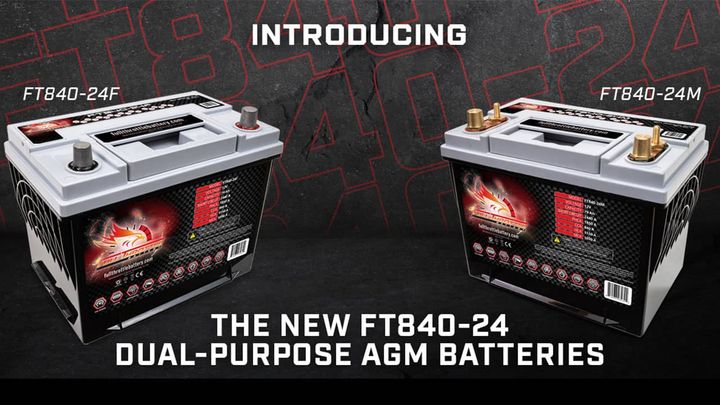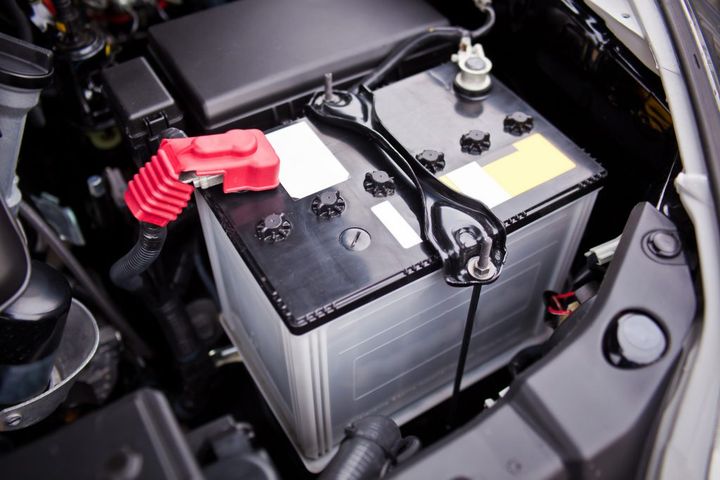


When it comes to automotive batteries, the 24f and 24 groups are among the most widely used and often confused due to their similar names and sizes. This comprehensive guide aims to demystify the distinctions between these two battery types, shedding light on their compatibility, performance, and factors to consider when selecting the right one for your needs.

Batteries are the lifeblood of various applications, from automotive to marine and recreational vehicles. Among the myriad of battery options available, the 24f and 24 groups stand out as popular choices. However, their similarities can lead to confusion, making it crucial to understand their unique characteristics and differences. In this article, we'll explore the key distinctions, compatibility considerations, performance comparisons, cost and availability factors, maintenance best practices, and lithium-ion alternatives, equipping you with the knowledge to make an informed decision when choosing the right battery for your needs.
While the 24f and 24 batteries may appear similar at first glance, they possess distinct differences that can significantly impact their performance and suitability for specific applications. Let's delve into these key distinctions:
| Battery Type | Length (inches) | Width (inches) | Height (inches) |
|---|---|---|---|
| 24f | 10.3 | 6.8 | 8.9 |
| 24 | 10.25 | 6.8 | 8.875 |
The physical dimensions of a battery play a crucial role in determining its compatibility and fitment. As shown in the table above, the 24f batteries are slightly larger than the 24 batteries. These slight variations in size may seem insignificant, but they can have profound implications when it comes to battery tray and hold-down compatibility.
24f batteries: Positive and negative terminals situated on opposite sides, with the positive terminal typically located on the left when viewed from the front.
24 batteries: Terminals positioned on the same side, with the positive terminal on the right when viewed from the front.
This difference in terminal configuration can have significant implications for cable routing and compatibility, which we'll discuss in the subsequent sections.
Performance ratings are crucial indicators of a battery's capabilities, and they can vary significantly between the 24f and 24 groups.
The CCA and CA ratings measure a battery's ability to deliver starting power and cranking ability, particularly in cold temperatures. Generally, 24f batteries boast higher CCA and CA ratings, indicating superior starting power and cranking ability compared to their 24 counterparts. This advantage makes 24f batteries better suited for applications with high cranking demands, such as diesel engines or extreme cold weather conditions.
The reserve capacity (RC) rating quantifies a battery's ability to provide a sustained load, which is particularly important for deep cycle applications. While the RC rating can vary among manufacturers, 24f batteries tend to have a higher RC rating, making them more suitable for deep cycle applications like powering accessories or trolling motors in marine environments.
While it is possible to use a 24f battery in place of a 24 battery, or vice versa, there are several crucial factors to consider to ensure safe and reliable operation.
Due to the reversed terminal locations between the 24f and 24 batteries, the battery cables may need to be routed differently or extended to accommodate the new battery type. Failure to properly route the cables can result in short circuits or damage to the electrical system, posing significant safety risks.
The slightly larger size of the 24f battery can potentially cause fitment issues in battery trays or hold-down systems designed specifically for 24 batteries. Ensuring proper fitment and secure mounting is essential to prevent battery movement and potential damage during operation.
While both the 24f and 24 batteries are designed for automotive applications, their performance characteristics can vary significantly, making it essential to understand their strengths and limitations.
As mentioned earlier, 24f batteries generally have an edge in terms of starting power and cranking ability due to their higher CCA and CA ratings. This advantage makes them better suited for applications with high cranking demands, such as diesel engines or extreme cold weather conditions, where reliable starting is paramount.
Although both battery types are primarily designed for starting applications, 24f batteries often have a higher reserve capacity, making them more suitable for deep cycle applications. This includes powering accessories or trolling motors in marine environments, where sustained power delivery is crucial.
The lifespan and durability of a battery can vary depending on several factors, including usage patterns, maintenance practices, and environmental conditions. Generally, higher-quality batteries from reputable manufacturers, regardless of the 24f or 24 group, tend to have longer lifespans and better durability.
However, it's important to note that proper maintenance and care play a significant role in extending the lifespan of any battery. Regular cleaning, inspection, and adherence to manufacturer guidelines for charging and storage can help maximize the battery's service life.
When selecting a battery, cost and availability are important factors to consider alongside performance and compatibility.
24f batteries tend to be slightly more expensive than their 24 counterparts, primarily due to their higher performance ratings and additional features. However, the price difference is typically not significant, and both battery types are widely available at various price points to accommodate different budgets.
| Battery Type | Average Cost Range |
|---|---|
| 24f | $120 - $200 |
| 24 | $100 - $180 |
Note: These cost ranges are approximate and can vary based on factors such as brand, retailer, and location.
Both 24f and 24 batteries are widely available from major battery manufacturers and retailers, making them easily accessible for most consumers and professionals. However, some manufacturers may offer a wider selection of one battery type over the other, depending on their product lineup and target market.
It's essential to research and compare options from various reputable brands and retailers to find the best combination of performance, compatibility, and affordability for your specific needs.
Proper maintenance and care are crucial for ensuring the longevity and optimal performance of both 24f and 24 batteries. Here are some best practices to follow:

Regular cleaning of the battery terminals and case can prevent corrosion and ensure proper electrical connections.
Inspecting the battery for any signs of damage, leaks, or swelling is recommended to identify potential issues before they escalate.
Using a compatible battery charger and following the manufacturer's recommendations for charging is essential to avoid overcharging or undercharging, which can lead to premature battery failure.
Monitoring the battery's voltage and specific gravity (for flooded lead-acid batteries) can also help identify potential issues and prevent premature failure.
Extreme temperatures, vibrations, and other environmental factors can significantly impact battery performance and lifespan.
Following the manufacturer's guidelines for storage and operating conditions can help maximize the battery's service life and ensure optimal performance.
With the increasing popularity of lithium-ion technology, several manufacturers now offer lithium-ion batteries in 24f and 24 sizes, providing drop-in replacements for traditional lead-acid batteries.
Lithium-ion batteries offer several advantages over lead-acid batteries, including:
Higher energy density
Longer lifespan
Faster charging times
Lighter weight
Lower self-discharge rate
These advantages make lithium-ion batteries more efficient and convenient for various applications, particularly those with weight and space constraints.
While lithium-ion batteries offer numerous benefits, their main disadvantage is their higher upfront cost compared to lead-acid batteries. Additionally, they may require specialized charging systems and have specific handling and disposal requirements, which can add to the overall cost of ownership.
| Battery Type | Advantages | Disadvantages |
|---|---|---|
| Lithium-ion | Higher energy density, longer lifespan, faster charging, lighter weight, lower self-discharge rate | Higher upfront cost, specialized charging systems, specific handling and disposal requirements |
| Lead-acid | Lower upfront cost, widely available | Shorter lifespan, slower charging, heavier weight, higher self-discharge rate |
With a comprehensive understanding of the differences between 24f and 24 batteries, as well as the advantages and disadvantages of lithium-ion alternatives, it's essential to consider several factors when selecting the right battery for your needs.
Evaluate the specific needs of your application, such as:
Starting power
Deep cycle capabilities
Environmental conditions (temperature, vibration, etc.)
Match the battery's performance characteristics to your requirements to ensure optimal performance and longevity.
Ensure that the battery you choose is compatible with your vehicle or equipment, considering factors like terminal locations, dimensions, and hold-down systems.
Proper fitment is crucial for safe and reliable operation, preventing potential damage and ensuring optimal performance.
While performance should be the primary consideration, factor in the cost and availability of the battery types in your area.
Striking a balance between performance, cost, and accessibility can help you make an informed decision that aligns with your budget and needs.
If your application allows for it, consider the benefits and drawbacks of lithium-ion batteries as an alternative to traditional lead-acid batteries. Evaluate factors such as:
Weight
Charging times
Lifespan
Determine if the higher upfront cost is justified by the potential long-term advantages.
The 24f and 24 batteries are widely used in various applications, each with its own strengths and considerations. While they may seem similar at first glance, understanding their differences in dimensions, performance characteristics, and compatibility is crucial for selecting the right battery for your needs. By carefully evaluating your application requirements, considering factors like starting power, deep cycle capabilities, and environmental conditions, you can make an informed decision and ensure optimal performance and longevity for your battery investment.
Remember, proper maintenance and care play a vital role in extending the lifespan of any battery, regardless of its type or group. By following best practices for cleaning, inspection, charging, and storage, you can maximize the value of your investment and enjoy reliable power delivery for years to come.
The 24 and 24f batteries have slightly different dimensions and terminal locations. The 24f battery is slightly larger and has the positive and negative terminals on opposite sides.
It is possible to use a 24 battery in place of a 24f battery, but you may need to extend the cable lengths and ensure proper fitment in the battery tray.
With proper maintenance and care, a high-quality 24f battery can last between 3 to 5 years, depending on usage and environmental conditions.
Signs that your 24f battery needs replacement include slow engine cranking, electrical component failures, a swollen battery case, or if the battery is over 5 years old.
Yes, some manufacturers offer lithium-ion batteries as drop-in replacements for 24f lead-acid batteries, providing longer lifespan and better performance.
Lithium-ion batteries offer higher energy density, longer lifespan, faster charging times, and lighter weight compared to traditional lead-acid batteries.
Proper maintenance includes keeping the battery clean, ensuring tight connections, and following the manufacturer's guidelines for charging and storage.
Yes, extreme hot or cold temperatures can significantly reduce the performance and lifespan of a 24f battery, potentially causing permanent damage.
CCA (Cold Cranking Amps) measures the battery's ability to start an engine in cold temperatures, while RC (Reserve Capacity) indicates how long the battery can power accessories if the alternator fails.
Consult your vehicle's owner's manual or a professional to determine the recommended battery group size, CCA rating, and RC rating for your specific make and model.

Sarah isn't your average gearhead. With a double major in Mechanical Engineering and Automotive Technology, she dived straight into the world of car repair. After 15 years of turning wrenches at dealerships and independent shops, Sarah joined MICDOT to share her expertise and passion for making cars run like new. Her in-depth knowledge and knack for explaining complex issues in simple terms make her a valuable asset to our team.






